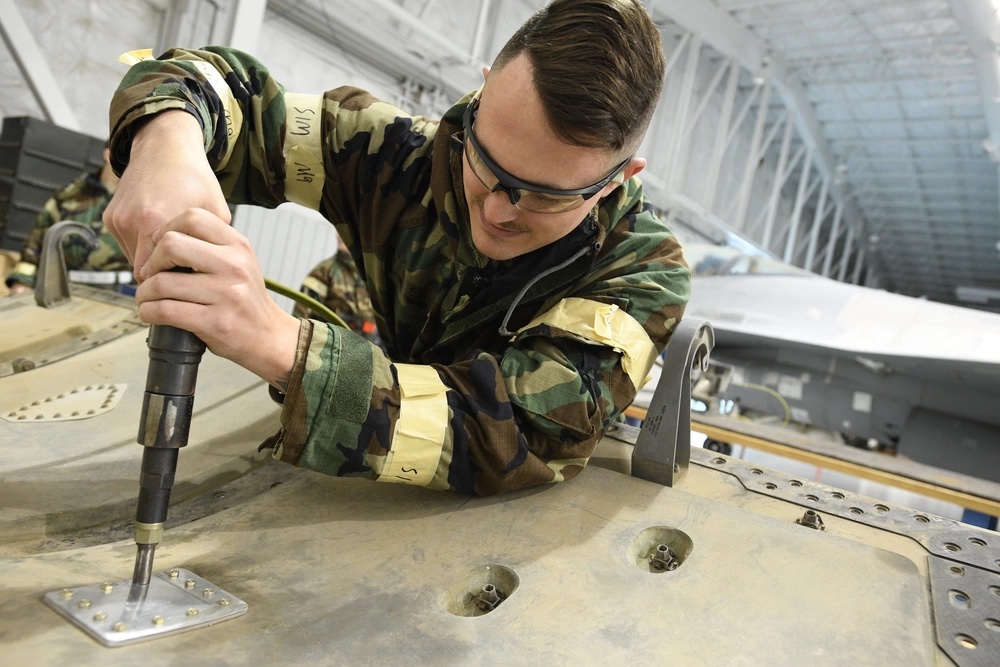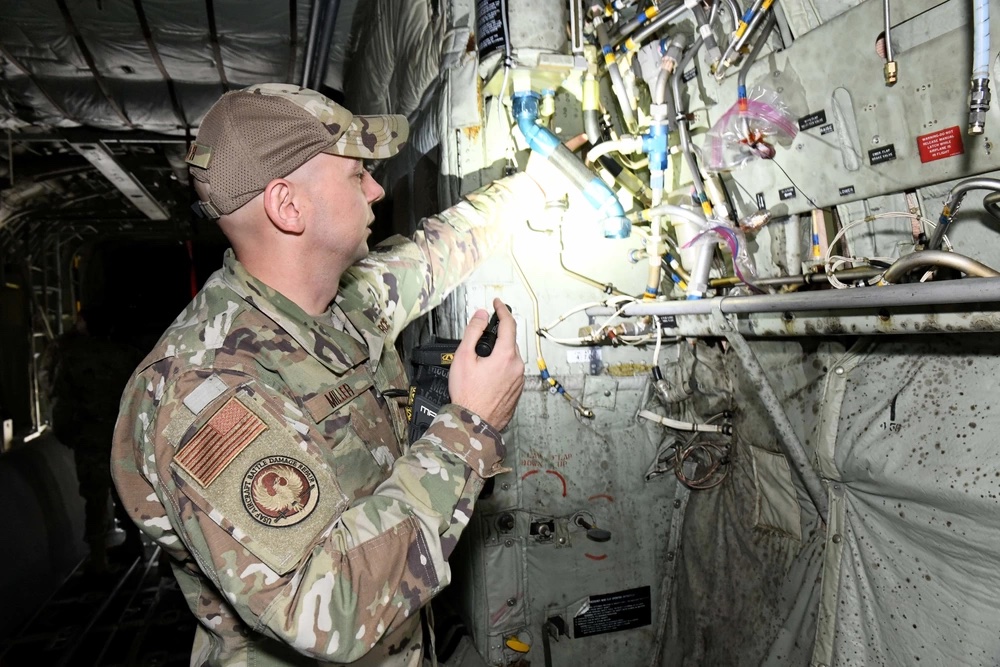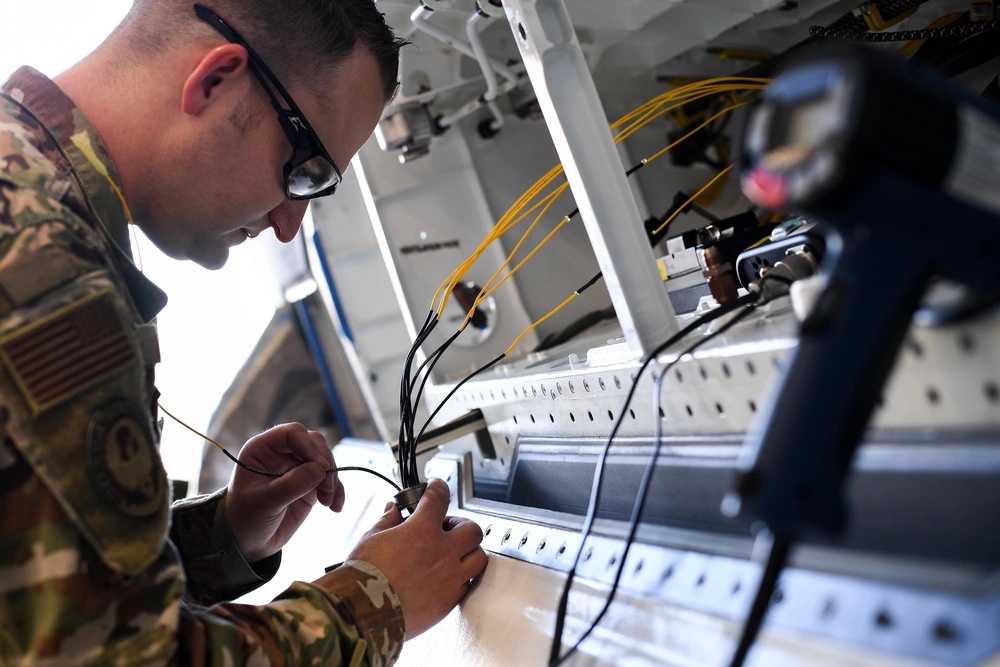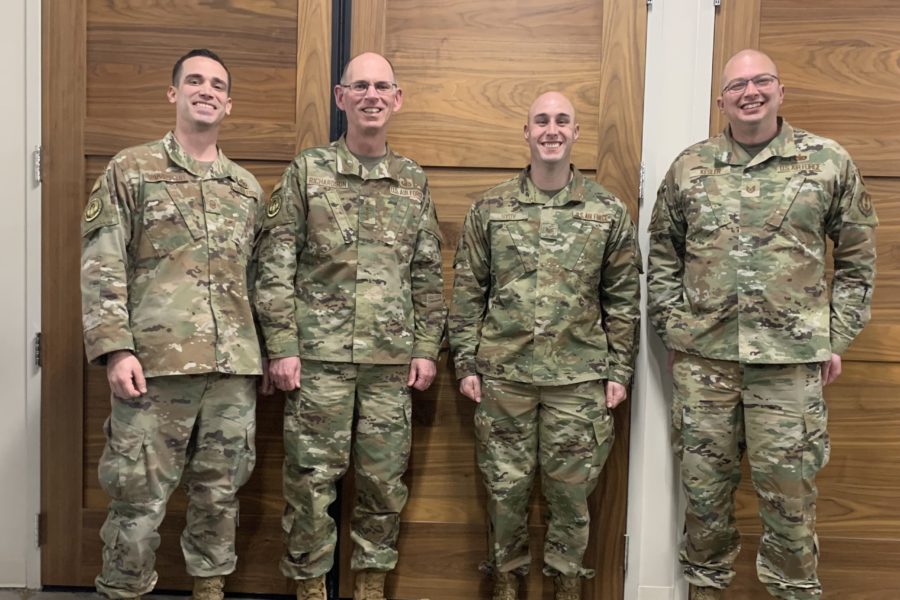AURORA, Colo.—At the AFA Warfare Symposium on March 7, the head of Air Force Materiel Command, Gen. Duke Richardson, was asked how the Air Force would respond if it were “punched in the face” during a conflict with a peer adversary like China. The general said his troops had a range of tools to fix the damage of such a punch, including rapid airfield repair and supply surges.
But one of the most important tools Richardson mentioned is a group of maintenance experts who can be dispatched around the world to perform heavy-duty repairs on aircraft that have sustained massive battle damage.
There are only about 150 of them in the entire Air Force, but Aircraft Battle Damage Repair (ABDR) Airmen could mean the difference between victory or defeat in a future conflict.
“We’ve got a batch of these ninjas that are ready to go off” and repair aircraft, Richardson said. “So if we get punched in the face, we will be ready to turn that team and move them out smartly.”
ABDR Airmen are masters of their trade. Many of them have already achieved 7-level, also known as “craftsman,” in their specific maintenance field before applying for a spot in the ABDR course.
“They are multi-capable Airmen already,” said Richardson, himself a former enlisted avionics technician. “They’re crew chiefs, they’re fuels experts, they’re sheet metal, they’re [electrical and environmental], all these different career fields.”

‘Light and lethal’
The training course to become an ABDR Airman takes place at one of Air Force Materiel Command’s three air logistics complexes across the country: one at Tinker Air Force Base, Okla., one at Robins Air Force Base, Ga., and the third at Hill Air Force Base, Utah. Each of these complexes perform “depot-level” maintenance and repair on aircraft—the kind of work that can’t be performed at an aircraft’s operational location.
Air Force depots have resurrected a large number of partially-destroyed aircraft over the years. But what happens in the middle of a conflict, when planners may not be able to send a damaged aircraft from Guam or Okinawa all the way back to Utah or Georgia? The answer: Bring the depot to the area of operations. ABDR Airmen stand ready to ship out to a conflict zone at a moment’s notice in order to patch up aircraft. They also pre-position ‘war wagons:’ two pallet positions’ worth of tools and raw materials at far-flung air bases to respond even more quickly to a crisis.
“We try to pre-stage as much as we can so whenever an incident does happen we have those materials on hand, we just need to get our bodies there to install the repairs,” Master Sgt. Kyle Sommerfeldt, one of three ABDR Airmen who Richardson highlighted March 7, told Air & Space Forces Magazine.
Sommerfeldt said the war wagon is a retrofitted ammunition trailer from the 1970s that now has toolboxes mounted onto it for storing tools and raw materials, making it essentially “just a rolling toolbox,” he said. The Air Force can pre-position them or move them easily aboard a cargo aircraft.
“We like to use the term ‘light and lethal,’” said Tech Sgt. William Kesler, another of the three ABDR Airmen. “Gen. Richardson mentioned us being like a ninja: the lighter we are, the better equipped we are to move quickly throughout the theater and get these aircraft back in the fight.”

Tools and materials are not the only things ABDR Airmen bring with them. They also travel with a commissioned aircraft structures engineer—typically a lieutenant or a captain—who can plan out and authorize depot-level repairs in the field.
“As you can imagine, with battle damage repair it’s hard to write exactly what it’s going to look like, so a lot of the times there’s no repair data for it,” Sommerfeldt said. “So you need an actual engineer to say, ‘Here’s what we need to do to fix this kind of damage.’”
That kind of authority helps ABDR crews be prepared for anything, even an A-10 Thunderbolt II coming in with a wing shot off.
“That’s exactly what we’re in there for,” Kesler said. “For those incidents just like that.”
‘Be there in theater’
The Air Force formed ABDR teams after the Vietnam War, where “rapid area maintenance teams” repaired or modified more than 1,000 aircraft under conditions ranging “from normal industrial facilities to flight lines at operating bases under direct enemy fire,” Air Force Maj. Darrell Holcomb wrotein a 1994 paper on the ABDR program.
Holcomb pointed out it is far more likely for an aircraft to be damaged in a conflict rather than completely destroyed, according to historical data. As an example, he noted that as many as 70 of the 144 A-10s deployed to the Gulf War were damaged, but only five were destroyed. Likewise, the damage to destroyed ratio for the F-4 Phantom II fighter in Vietnam was about four to one, Holcomb said. With such ratios, it helps to have highly-mobile, highly-skilled teams of experts who can get damaged aircraft back in the air.
“Our overall goal is to be there in theater and get the most expeditious repair on this thing,” said Sommerfeldt. “Now it can go back and fly an operational mission instead of us losing aircraft, attriting out of the fight.”
The Vietnam-era RAM teams were composed mostly of civilians, and while they helped repair many aircraft, the repair times for many incidents of combat damage were still “painfully long,” Holcomb wrote. While the Air Force repaired 59 percent of the aircraft damaged in Vietnam in 48 hours or less, the Israeli Air Force repaired about 72 percent of their combat damaged aircraft in 24 hours or less during the Yom Kippur War in 1973.
The U.S. Air Force wanted to fix its aircraft faster, and the development of the A-10, an aircraft designed to take a beating and keep fighting, also helped spur the creation of the first ABDR teams in the 1980s. Since then, ABDR teams have helped keep U.S. aircraft running in combat theaters around the world.
ABDR teams returned about 30 aircraft to service during the Gulf War, and in Afghanistan an ABDR team patched up a C-130 that had 85 holes in its fuselage from enemy mortar fire. A C-5 Galaxy’s cargo door had also been damaged, “so the team split in half to accomplish both repairs at the same time,” Master Sgt. Gian Santos, flight chief for the 402nd Expeditionary Depot Maintenance Flight at Robins Air Force Base, said in a 2022 press release.
“That is how versatile the ABDR teams are and how important this mission is to the Air Force,” Santos said.

Peacetime Pros
While ABDR teams can perform repairs in the field during a conflict, during peacetime they work in air logistics complexes just like any other depot-level maintainer. Sommerfeldt said the 150 or so ABDR Airmen save the Department of Defense more than $10 million and tens of thousands of man-hours a year, not to mention delivering about 150 aircraft a year back to field-level commanders.
With their years of experience in the aircraft repair business, ABDR Airmen often think of innovative ways to make the repair process more efficient. At the Department of Defense Maintenance Symposium last year, a group of ABDR Airmen won the People’s Choice Award for the DOD Maintenance Innovation Challenge, for their work with the Air Force Research Laboratory to dramatically reduce the amount of time needed to repair fiber optic cables aboard Air Force aircraft.
“Any time where the whole joint force is kind of voting on it and you win something at the DOD level, that was pretty special,” said Sommerfeldt.
Wherever the next conflict unfolds, the ABDR crews can use their expertise to keep Air Force jets and planes running.
“We have a chip on our shoulder, like no matter what’s broken on an aircraft, we can fix it,” Sommerfeldt said. “Nose to tail, no matter how big or how small. Like how Gen. Richardson put it: What happens if we get punched in the face? We have a counter-punch when it comes to the war of attrition. We’re the counter-punch—providing aircraft availability.”


